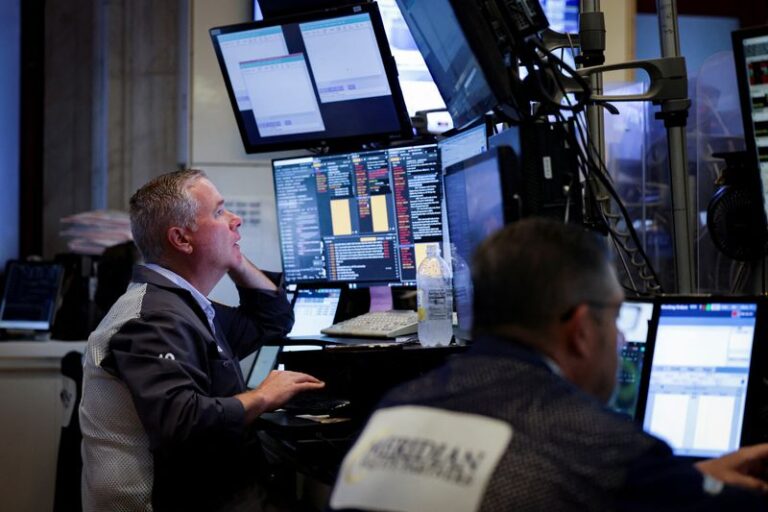By Sinéad Carew and Pranav Kashyap
(Reuters) -The S&P 500 ended Tuesday’s choppy session slightly lower as investors waited for clarity on U.S. trade policy after President Donald Trump’s latest tariff threats dampened hopes around talks with some trade partners.
Wall Street equities had sold off sharply on Monday after Trump warned of sweeping new tariffs on goods from key trading partners such as Japan and South Korea and a range of smaller countries starting in August.
Tuesday’s moves in U.S. indexes were less pronounced than in the previous session but the benchmark S&P 500 and the tech-heavy Nasdaq spent the session flitting between red and green as investors sought direction from tariff headlines.
Trump appeared to broaden his global trade war with the announcement on Tuesday that he would put a 50% tariff on imported copper while he said that long-threatened levies on semiconductors and pharmaceuticals were coming soon.
The U.S. president said trade talks have been going well with the European Union and China but added that he was only days away from sending a tariff letter to the EU.
“It’s almost like markets are waiting to exhale,” while investors wait for more tariff news, said Carol Schleif, chief market strategist at BMO Private Wealth in Minneapolis, Minnesota.
“The fact that markets are holding in pretty tight, still just an eyelash away from all-time highs, shows investors are willing to give headlines the benefit of the doubt,” she said.
And while investors wait for the second-quarter earnings season to begin in mid-July, they are likely relieved by the passage into law last week of the U.S. government’s spending plan, including some business-friendly tax policies, according to Schleif.
The Dow Jones Industrial Average fell 165.60 points, or 0.37%, to 44,240.76, the S&P 500 lost 4.46 points, or 0.07%, to 6,225.52 and the Nasdaq Composite gained 5.95 points, or 0.03%, to 20,418.46.
Among the S&P 500’s 11 major industry groups, only five showed any gains. The energy index had the biggest advance, finishing up 2.72%, while the more defensive consumer staples and utilities sectors both fell more than 1% on the day.
While investors were wary of making big moves in larger stocks, the Russell 2000 small-cap index outperformed with a 0.66% gain.
The market’s cautious reaction to trade headlines contrasted with the wild volatility that was unleashed after Trump’s April 2 “Liberation Day” tariff announcements, which pushed the Nasdaq down sharply to confirm a bear market and sent the Dow and the S&P 500 into a correction.
Story Continues
